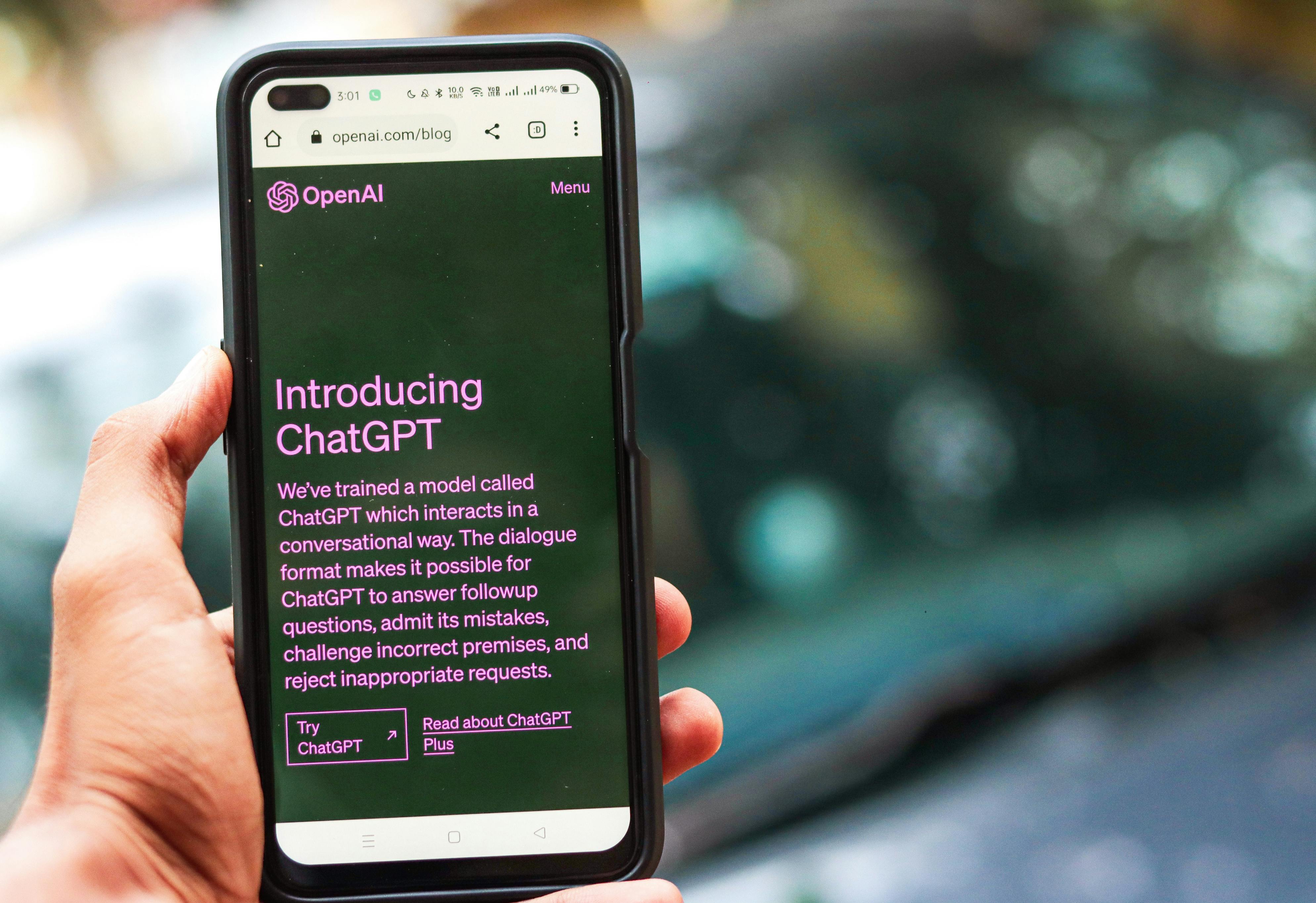
The Traffic Bot Phenomenon: Unveiling Its Benefits, Pros, and Cons
Traffic bot technology refers to the use of automated software programs designed to generate traffic, or website visits, to a specific web address. These bots aim to mimic human behavior while accessing websites, thereby simulating genuine user interactions to elude detection.
Traffic bots play a significant role in online marketing campaigns as they can boost website visibility and potentially attract organic visitors. However, they can also be used unethically to manipulate website metrics and artificially inflate engagement statistics.
To dive deeper, traffic bots employ various techniques that can include:
1. Web Crawling: Bots search and crawl through web pages using various protocols (HTTP, HTTPS) imitating user agents (such as popular browsers) to gather information about the targeted site's content and structure.
2. Packet Forging: This technique involves creating packets at the network level, forging IP addresses and port numbers to mask the bot's true identity and location.
3. Page Visits: Traffic bots repeatedly access specific pages on a website, usually by following predefined actions or navigation patterns. This activity aims to increase the apparent popularity of the site.
4. Session Emulation: Traffic bots simulate users' browsing activities in terms of generating mouse movements, clicks, scrolling behavior, form submissions, and even account logins. This mimicry helps them appear like real visitors to evade detection methods such as IP tracking or JavaScript-based user interaction monitoring.
5. Proxy Usage: Traffic bots commonly use proxies, which act as intermediaries between the bot and the target website. Proxies help mask the bot's origin by routing traffic through different IP addresses or geographical locations.
It is essential to understand that there are ethical concerns associated with using traffic bots. While legitimate uses include search engine optimization analysis and load testing websites for performance optimization, unethical practices involve employing bots for auto-generated ad impressions, manipulating analytics data, boosting social media engagement fraudulently, or facilitating distributed denial-of-service attacks.
Several mitigation techniques have emerged to combat malicious traffic bots, such as:
- Captchas: Utilizing CAPTCHA (Completely Automated Public Turing Test to Tell Computers and Humans Apart) challenges can effectively thwart most basic automated bot attacks by requiring users to complete tasks that are difficult for bots to solve.
- IP Filtering: Websites employ IP filtering techniques to block or limit access from known proxy servers and IP address ranges infamous for hosting traffic bots.
- Bot Detection Services: Numerous services provide algorithms that analyze user behavior or employ machine learning techniques to differentiate between human users and traffic bots. They flag suspicious patterns and behaviors, enhancing website security.
Understanding the basics of traffic bot technology is crucial in navigating the often murky waters of web analytics, online marketing strategies, and ensuring a cleaner online ecosystem while appreciating the legitimate benefits it can provide.
 How Traffic Bots Influence Web Analytics: A Comprehensive OverviewIn the world of digital marketing, website traffic plays a crucial role in measuring success and reaching the desired online goals. However, with advances in technology, traffic bots have emerged as a controversial topic that undoubtedly affects web analytics. Traffic bots are automated software programs designed to mimic human behavior while accessing websites, producing actions that can significantly influence analytics data.
How Traffic Bots Influence Web Analytics: A Comprehensive OverviewIn the world of digital marketing, website traffic plays a crucial role in measuring success and reaching the desired online goals. However, with advances in technology, traffic bots have emerged as a controversial topic that undoubtedly affects web analytics. Traffic bots are automated software programs designed to mimic human behavior while accessing websites, producing actions that can significantly influence analytics data.One of the noticeable impacts of traffic bots on web analytics is the amount of site visits or impressions generated. These bots are programmed to continuously navigate through websites, creating false impressions that inflate visitor numbers. While these numbers may make your site appear more popular, they provide an inaccurate representation of genuine human interaction and engagement.
Moreover, traffic bots can skew other important metrics such as bounce rate. Since these bots rarely engage with your website's content, their visits can significantly lower bounce rates artificially. This misleading data might lead you to think that your website is performing exceptionally well when user experience and actual engagement metrics might be quite different.
Referral sources are also influenced by traffic bots. By generating fake backlinks and referrals, these bots manipulate data regarding where your website traffic originates from. Consequently, understanding true referral sources becomes challenging, making it difficult for marketers to assess the effectiveness of their campaigns and allocate resources accordingly.
Traffic quality is another aspect influenced by bots, specifically in terms of session duration and page views per session. Due to their non-engaging nature, bot-generated sessions are typically short-lived with minimal page views. These fleeting visits negatively impact average session duration and deter accurate measurement of a website's content engagement.
The presence of these automated bots can hamper the accuracy of Conversion Rate Optimization (CRO) efforts. Bots generate false conversions that falsely inflate conversion rates, deceptive measurements to evaluate the success of marketing campaigns or site optimization techniques.
Online advertisement attribution is equally affected by traffic bots. Bots creating impressions or engaging with ads might deceive campaign tracking tools into crediting successful results solely due to bot-generated interactions, ultimately affecting the return on investment (ROI) evaluation and potentially leading to poor strategic decisions.
Furthermore, the issue of data sovereignty arises concerning traffic bots. Since some bots operate from different geographic locations, analytics data may contain visits from undesirable regions or countries outside your target market. This dilution of data clouds strategic decision-making that relies on accurate geographical insights.
To address the influence of traffic bots in web analytics, various preventive measures and tools are available for marketers. This includes distinguishing human-driven traffic from bot-generated traffic using behavioral patterns combined with exhaustive solution tools like CAPTCHAs or reCAPTCHAs, IP address analysis, user-agent analysis, or session time limits.
Knowing the impact of traffic bots on web analytics allows for more informed decision-making. By understanding the associated challenges and taking appropriate preventive measures, marketers can ensure more accurate data analysis – leading to better insights into website performance, user engagement, campaign success rates, and optimizing their efforts accordingly.
 The Evolution of Traffic Bots: From Simple Scripts to Advanced AIThe Evolution of traffic bots: From Simple Scripts to Advanced AI
The Evolution of Traffic Bots: From Simple Scripts to Advanced AIThe Evolution of traffic bots: From Simple Scripts to Advanced AITraffic bots have come a long way in their evolution, progressing from simple scripts to sophisticated AI algorithms over time. As technology advances, these bots continuously adapt to stay ahead in the game of online traffic generation. In this blog post, we will explore the fascinating journey of traffic bots, outlining their milestones and how they have revolutionized the way we understand online traffic.
The early days of traffic bots revolved around basic scripts that mimicked human behavior online. These early iterations served a limited purpose, merely producing automated traffic by following programmed instructions. Since they lacked versatility, they often failed to emulate genuine user interaction convincingly. Moreover, their activities were easy to identify as repetitive patterns, raising alarms among search engines and businesses keen on maintaining fair play.
Despite their limitations, simple traffic bots served as precursors to advanced iterations that made significant evolutionary leaps. The introduction of proxies and rotation techniques allowed these bots to mimic real users more effectively by cycling through different IP addresses and imitating diverse locations. By adopting these techniques, traffic bots gained an illusion of dynamism and authenticity, making it harder for search engines to detect their automated actions.
As search engines became smarter at detecting and combatting such deceptive practices, the development of traffic bots shifted towards more sophisticated strategies. Machine learning and artificial intelligence emerged as pivotal components in this transformation. Traffic bots began incorporating AI capabilities that enabled them to analyze patterns, learn from user behaviors, and adjust their actions accordingly.
With AI-powered traffic bots, an unprecedented level of emulated human-like behavior became possible. These advanced algorithms could mimic browsing habits, engage with web content intelligently, and generate traffic that was increasingly indistinguishable from organic sources. By learning from real internet users and dynamically adapting their behavior based on evolving trends, AI-driven bots successfully elevated the standards of automated web traffic generation.
The breakthroughs achieved in traffic bot evolution have significantly impacted various industries. For internet marketers, traffic bots offered opportunities to reach wider audiences and augment online visibility while navigating the fierce competition for exposure. However, deploying these bots ethically became an important concern to ensure fair practices and avoid penalties imposed by search engines for artificially boosting web traffic.
To address these problems, present-day traffic bots require careful regulation of their actions with the advent of white-hat automation techniques. These ethical traffic bots focus on genuine user engagement by simulating real user journeys, interacting with content organically, and adapting to changes in search engine algorithms. The emphasis on responsible behavior aims to provide value not just to businesses but also to the actual audience engaging with the content.
As we look ahead, the evolution of traffic bots continues. With AI technology advancing rapidly and becoming more accessible, we can anticipate even smarter and more refined iterations. The future likely holds bots capable of highly complex decision-making, enhanced personalized engagement, and a seamless integration with other AI-powered systems shaping our digital experiences.
In conclusion, traffic bot evolution showcases their progression from plain scripts to intelligent AI-powered algorithms. Improvements in adaptability, emulation of human behavior, and interactions have driven remarkable shifts in how these bots generate online traction. Alongside advancements come ethical considerations to ensure that automated traffic generation aligns with fair play. The evolution of these bots will undeniably remain an exciting sphere of development as technology continues to shape our digital landscape.
 Measuring the Impact of Traffic Bots on Online Businesses and WebsitesMeasuring the Impact of traffic bots on Online Businesses and Websites
Measuring the Impact of Traffic Bots on Online Businesses and WebsitesMeasuring the Impact of traffic bots on Online Businesses and WebsitesTraffic bots, also known as web robots or simply bots, are automated software programs designed to simulate human interactions on websites. While there are legitimate uses of bots in areas such as search engine indexing and data scraping, some traffic bots are created with malicious intent. These nefarious bots can have a significant impact on online businesses and websites, often causing disruptions and potential harm.
Understanding the impact of traffic bots on online businesses and websites requires proper measurement and investigation. Here are key aspects to consider:
Observing Traffic Patterns: Website administrators can monitor their website's traffic patterns to identify any unusual behavior that may be the result of traffic bot activity. For instance, sudden spikes in visitor numbers or an abnormally high rate of hits on specific pages within a short time frame could be indicators of bot involvement.
Analyzing Engagement Metrics: Examining engagement metrics like bounce rate, time spent on site, conversion rates, and click-through rates can provide insight into how traffic bots may be affecting user behavior. If these metrics deviate significantly from normal patterns or benchmarks, it might be a sign of bot interference.
Detecting Fraudulent Clicks/Impressions: For businesses involved in advertising or pay-per-click models, measuring bot impact comes down to tracking fraudulent clicks or impressions. High or unusual click-through rates that do not lead to actual conversions could indicate the presence of bot-generated clicks aimed at misleading advertisers and diminishing returns.
Examining Server Load: A sudden increase in server load could suggest the excessive number of requests generated by traffic bots trying to access pages, files, or specific functionalities. Assessing server resources such as CPU usage, bandwidth consumption, and network throughput alongside sudden spikes in activity might highlight bot-driven traffic surges.
Investigating IP Origins: Analyzing originating IP addresses can help determine whether the influx of visits is driven by legitimate human users or automated bots. Repeated visits or patterns of multiple connections from the same IP could raise suspicion for potential bot involvement.
Monitoring Geographic Discrepancies: Traffic bots can frequently originate from specific regions or countries. A sudden shift in the geographical distribution of visitors may signal bot involvement as well. Monitoring the discrepancy between expected traffic sources and actual locations based on IP analysis could shed light on bot presence.
Analyzing User-Agent Data: Analyzing User-Agent strings present in HTTP request headers allows detecting suspicious patterns indicative of web robot activity. Multiple requests coming from identical or slight variations of User-Agents might point towards bots mimicking diverse devices or browsers.
Studying Referral Traffic: Another element to evaluate is incoming referral traffic sources. Bots often use non-standard or suspicious sources, generating traffic that suggests an unusual pattern when compared to legitimate, human-driven referrals.
Issuing Captchas and Authentication Mechanisms: Implementing captchas, multi-factor authentication, and other protective mechanisms help combat bot activity by filtering out malicious attempts. Studying authentication logs and how frequently captchas are triggered can further highlight potential bot influence.
Taking Action: Once the impact of traffic bots has been measured, businesses can take steps to minimize their adverse effects. Employing advanced monitoring systems, using robust anti-bot security solutions, and updating server configurations represent some examples of effective countermeasures against traffic bot interference.
By closely measuring and analyzing the varied facets mentioned above, online businesses and websites can gain a better understanding of the impact of traffic bots. This knowledge allows them to implement tailored solutions to protect their platforms from the negative consequences brought about by malicious bot activity.
 Exploring the Ethical Dimensions of Traffic Bot UsageExploring the Ethical Dimensions of traffic bot Usage
Exploring the Ethical Dimensions of Traffic Bot UsageExploring the Ethical Dimensions of traffic bot UsageTraffic bots are automated software programs designed to mimic human behavior online. They can generate web traffic to websites, simulate interactions, or perform various online tasks. However, the use of traffic bots raises ethical concerns that need careful consideration.
1. Intent and Purpose:
- Understanding the intent behind using traffic bots is critical in evaluating their ethical implications. Some legitimate purposes include testing website performance, gathering analytics data, or assisting with search engine optimization. Other intents may be more questionable, such as artificially inflating website statistics or gaming online advertising systems for financial gain.
2. Deception and Fraud:
- One of the key ethical dilemmas surrounding traffic bot usage is the potential for deception and fraud. When deployed unethically, traffic bots can mislead search engines, deceive advertisers, and manipulate statistics, leading to skewed insights and unfair advantages. These actions can undermine the integrity of online platforms and harm genuine users.
3. Competition and Fairness:
- The use of traffic bots can distort competition by artificially increasing website popularity or driving engagement metrics solely for personal gain. This gives unethical actors an unfair advantage over competitors who abide by organic growth strategies. Consequently, it may also diminish trust within an industry and erode user confidence in online interactions.
4. Legality and Terms of Service:
- Traffic bot usage may violate the terms of service of various online platforms and services, making it potentially illegal or subject to legal consequences. It is essential to review these terms meticulously before utilizing traffic bot software to ensure compliance with legal requirements.
5. Cybersecurity and Privacy Risks:
- Traffic bots pose cybersecurity risks if they infiltrate networks or systems without proper authorization. Unauthorized access through traffic bot activity may result in data breaches or compromise privacy rights of individuals unsuspectingly interacting with them.
6. Real Users' Experience:
- Artificially generated traffic by bots can affect the experience of real users on websites and applications. Excessive traffic can overload servers, slow down page load times, and impede access for legitimate users. This degradation of user experience is considered unethical, as it negatively impacts genuine visitors who expect reliable and optimized services.
7. Industry Standards and Ethical Guidelines:
- The practice of traffic bot usage remains controversial, primarily due to its potential for abuse. To address these ethical concerns, industry-specific guidelines can be established, outlining the responsible use of traffic bots and highlighting best practices to ensure fairness, transparency, and respect for user experience.
8. Transparency and Disclosure:
- When employing traffic bots in a justifiable manner, it is important to disclose their usage to relevant parties affected by their activity. Informing users, advertisers, or other stakeholders about the implementation can help maintain transparency and establish trust that the intentions are legitimate.
In conclusion, ethical considerations surrounding traffic bot usage primarily revolve around transparency, fairness, deception, privacy protection, and impact on both digital platforms and real users. Striking a balance between the benefits they provide in certain contexts versus potential harm caused requires careful evaluation and adherence to ethical guidelines within the online community.
 Traffic Bots and SEO: Friend or Foe?traffic bots and SEO: Friend or Foe?
Traffic Bots and SEO: Friend or Foe?traffic bots and SEO: Friend or Foe?Traffic bots are automated software programs designed to generate traffic to websites. These bots perform various tasks, such as visiting web pages, clicking on links, or filling out online forms. While they can provide a boost in website traffic numbers, their usage raises questions about their impact on search engine optimization (SEO) efforts. Let's explore whether traffic bots are truly a friend or a foe when it comes to SEO.
On one hand, traffic bots can be seen as beneficial for SEO purposes. By increasing the number of visitors to a website, they can improve metrics such as time on site and page views per session. Search engines often consider these metrics when evaluating the relevance and user-friendliness of a website, potentially leading to higher rankings in search engine results pages (SERPs).
Moreover, traffic bot interactions on web pages, including clicks and form submissions, might create the illusion of user engagement. This activity could be interpreted positively by search engine algorithms, possibly influencing SEO ranking factors like click-through rates (CTR), conversion rates, and even bounce rates.
However, trafficking bots can quickly become problematic. First and foremost, most search engines have advanced algorithms that can detect and penalize fraudulent traffic generating tactics. Using traffic bots may lead to penalties and negative impacts on SEO rankings in the long run.
Additionally, while increased traffic numbers may seem attractive at first glance, it becomes meaningless if the traffic isn't genuine. High bounce rates due to ineffective targeting or irrelevant bot-generated clicks can harm rankings as search engines interpret low engagement negatively.
Another major concern is the ethical dimension of using traffic bots. Bots artificially inflate traffic statistics without providing any real value to website owners or genuine users. This practice undermines the credibility and integrity of online analytics data used for business decision-making.
Furthermore, spambots used for creating backlinks or flooding comment sections can negatively affect website reputation. Search engines consider spammy activities harmful and may eventually penalize the website, negatively impacting overall SEO efforts.
Therefore, while traffic bots may initially seem like valuable tools to increase website traffic and potentially improve SEO metrics, they come with significant risks. In the long run, the negative impacts on SEO rankings, credibility, user experience, and overall website reputation far outweigh any potential short-term benefits such as higher traffic numbers.
It is crucial for website owners and SEO professionals to focus their efforts on legitimate strategies, such as creating high-quality content, optimizing websites for user experience, earning natural backlinks, and promoting their websites through authorized channels. These organic approaches not only yield better long-term results but also contribute to building a reputable online presence.
 Navigating the Legal Landscape: The Legality of Using Traffic BotsNavigating the Legal Landscape: The Legality of Using traffic bots
Navigating the Legal Landscape: The Legality of Using Traffic BotsNavigating the Legal Landscape: The Legality of Using traffic botsWhen it comes to using traffic bots, understanding the legal implications is crucial. While businesses and marketers are always trying to find new ways to increase web traffic, it is necessary to consider the legal consequences associated with these methods. Here's everything you need to know about the legality of using traffic bots without too much technical jargon:
1. Defining Traffic Bots:
Traffic bots are software programs or automated scripts designed to automate web browser activities, simulating real users' actions online. They can visit websites, navigate through pages, click on links, and even complete online forms. Their purpose is to generate traffic numbers on a website artificially.
2. Intended Uses of Traffic Bots:
Traffic bots can serve legitimate purposes in scenarios that fall within ethical boundaries. For instance, businesses may use them for testing website performance, analyzing page layouts, monitoring security aspects, or gathering data for research purposes when explicitly authorized by website owners or operators.
3. Unethical Uses:
Many traffic bots operate contrary to ethical guidelines when deployed for reasons like click fraud, customer impressions manipulation, artificially boosting website rankings on search engines (SEO manipulation), plaque-making advertising networks, or causing harm to competitors by deliberately overwhelming their servers.
4. Violation of Terms of Service (TOS):
Most websites have Terms of Service agreements that visitors should abide by when accessing their content or using their services. The use of traffic bots may fall under prohibited activities according to these TOS documents. Engaging in activities violating TOS agreements could potentially lead to legal consequences depending on the jurisdiction.
5. Copyright Infringement Concerns:
When operating a traffic bot, it's important to respect intellectual property rights by obtaining lawful permissions from copyright holders. Bots visiting webpages could potentially infringe copyrighted material like text, images, videos, or audio if not properly authorized.
6. Legal Consequences:
The legality of using traffic bots and the associated consequences depend on various factors such as geographic location, purpose, and intent. Engaging in fraudulent or manipulative practices through traffic bots may expose individuals or businesses to civil lawsuits, criminal charges (in some cases), financial penalties, or reputational damage.
7. The Role of Bot Management:
Bot management systems are employed by website owners to identify, block, or manage suspicious bot traffic effectively. Technological advancements have allowed companies to distinguish human traffic from non-human traffic and flag any anomalous activities that could be regarded as unwanted bot behavior.
8. Compliance and Best Practices:
When considering using traffic bots in compliance with relevant laws and regulations, it is essential to adopt best industry practices. Staying informed about legal changes regarding web automation tools, respecting their intended use by developers, obtaining appropriate authorizations from website operators, and employing legitimate bot management systems are some key factors to consider.
Remember, this information shouldn't replace professional legal advice, but it should give you a comprehensive overview of the legal landscape surrounding traffic bots. Ensuring ethical behavior and observing applicable laws can help businesses navigate this complex topic while avoiding potentially costly legal entanglements.
 Enhancing Site Performance with Traffic Bots: Pros and ConsEnhancing Site Performance with traffic bots: Pros and Cons
Enhancing Site Performance with Traffic Bots: Pros and ConsEnhancing Site Performance with traffic bots: Pros and ConsTraffic bots are computer programs designed to imitate human behaviors on websites and generate traffic. They have gained popularity as a method for boosting site performance. Here, we will look at the pros and cons of using traffic bots to enhance site performance.
Pros:
- Increased website traffic: The primary benefit of using traffic bots is their ability to drive traffic to a website. By generating automated visits, they can increase the number of visitors, which may lead to improved search engine rankings and organic traffic.
- Enhanced visibility: With more visitors, your website appears more popular, helping to attract genuine users. People tend to trust sites that have high traffic volume, so traffic bots can create a positive perception of your brand or product.
- Improved analytics: When traffic bots visit your site, it can improve your data analytics. You can observe user behavior patterns, track conversions, analyze demographic information, and gain insights that can help optimize marketing strategies.
- Works around the clock: Unlike human users who are limited by time and availability, traffic bots can run continuously, boosting website activity consistently. It ensures consistent exposure and engagement regardless of time zones or non-business hours.
Cons:
- Inaccurate metrics: While increased traffic is enticing, it may not accurately represent user engagement or genuine interest in your content or offerings. Traffic bots cannot mimic human intent or interactions completely. Therefore, relying solely on traffic numbers might provide a skewed view of your site's performance.
- Potential blacklisting: Some search engines and online platforms actively monitor for bot activities. If detected, these bots may lead to penalization or even permanent banning from certain platforms. Bots can negatively affect website credibility, potentially ruining the reputation you worked so hard to create.
- Accessibility issues: Traffic bots may trigger accessibility concerns for individuals with visual impairments or other accessibility needs. Automatic interaction from bot-generated traffic might create barriers that prevent all users from accessing your site seamlessly.
- Ethical considerations: The ethical implications of using traffic bots are often a topic of debate. Bots essentially manipulate visitor numbers artificially, which is seen by many as a dishonest practice. It goes against the principles of genuine engagement and can harm user trust if discovered.
In conclusion, utilizing traffic bots can provide several advantages, including increased traffic volume and visibility, alongside beneficial data insights. However, it is important to be aware of the potential downsides like inaccurate metrics, blacklisting risks, accessibility concerns, as well as ethical considerations. When opting for traffic bots, it's crucial to strike a balance and consciously weigh the pros and cons to make an informed decision for your website's performance enhancement.
 The Role of Traffic Bots in Internet Marketing and Advertisement Strategiestraffic bots, also known as web robots or bots, play a significant role in internet marketing and advertisement strategies. These automated programs are specifically designed to perform tasks on websites, emulating human behavior, and increasing overall traffic to a particular website or online content. However, it is essential to understand the various aspects of traffic bots and their implications within the context of internet marketing and advertisement strategies.
The Role of Traffic Bots in Internet Marketing and Advertisement Strategiestraffic bots, also known as web robots or bots, play a significant role in internet marketing and advertisement strategies. These automated programs are specifically designed to perform tasks on websites, emulating human behavior, and increasing overall traffic to a particular website or online content. However, it is essential to understand the various aspects of traffic bots and their implications within the context of internet marketing and advertisement strategies.Firstly, traffic bots can be utilized to drive higher volumes of traffic towards specific websites or targeted landing pages. This increased flow of visitors can contribute to enhanced brand exposure, higher conversion rates, and improved chances of achieving marketing objectives. These bots mimic human actions such as browsing websites, clicking on links, and interacting with various elements within the site. By simulating organic user behavior, they can create a perception of higher engagement and activity levels for search engines and potential customers.
Secondly, internet marketers often employ traffic bots as a means of improving search engine optimization (SEO) initiatives. Bots visiting websites frequently increases their visibility on search engine result pages (SERPs). The repeated presence signals search engines that the content is relevant and popular. Consequently, this positively impacts the website's ranking and can improve organic traffic inflow.
Similarly, advertising strategies benefit from the utilization of traffic bots. Ad impressions directly affect campaign efficiency, and a higher impression count may result in better performance and conversion metrics. By employing expertly-configured bots that access websites hosting ads regularly, advertisers increase the number of ad views and generate potential revenue streams from pay-per-click (PPC) systems.
Furthermore, traffic bots contribute to split testing efforts during digital advertising campaigns. They can be programmed to visit different landidng pages or variations of advertisements to measure their relative effectiveness. Marketers can use the insights gained from these experiments to optimize their campaigns over time.
However, while traffic bots possess several benefits for internet marketing and advertisement strategies, there are certain challenges worth considering. For instance, click fraud poses a significant risk when utilizing traffic bots for ad generation. Malicious actors can create bots that camouflage as genuine users, intentionally clicking on ads to generate fraudulent revenue or manipulate competitors' budgets. Various security measures and platforms exist to combat such fraudulent activities, enforcing better accountability and transparency.
Additionally, some might argue that traffic bots enable false engagement metrics. Since they are programmed to simulate human actions, the resulting activity could mask the true level of user interest or intent. Consequently, it becomes crucial for businesses and marketers to combine bot-driven efforts with reliable data analytics and interpretative methodologies. This allows them to distinguish artificially generated interactions from genuine user engagement.
In conclusion, traffic bots assume a multifaceted role in internet marketing and advertisement strategies by increasing website traffic, boosting SEO initiatives, enhancing ad impressions, aiding in split testing efforts, and more. However, it is imperative to tread carefully to avoid potential risks such as click fraud and ensure accurate interpretation of engagement metrics. Striking a balance between utilizing these automated tools effectively while maintaining data integrity remains critical for successful online advertising and marketing campaigns.
 Distinguishing Between Genuine and Bot Traffic: Tools and TechniquesWhen it comes to distinguishing between genuine and bot traffic bot, there are various tools and techniques available that can help website owners or administrators in evaluating the authenticity of their web traffic. These tools and methods aim to identify and filter out any artificial or automated visits, ensuring accurate analytics data and more reliable audience analysis. Here are some key aspects to consider:
Distinguishing Between Genuine and Bot Traffic: Tools and TechniquesWhen it comes to distinguishing between genuine and bot traffic bot, there are various tools and techniques available that can help website owners or administrators in evaluating the authenticity of their web traffic. These tools and methods aim to identify and filter out any artificial or automated visits, ensuring accurate analytics data and more reliable audience analysis. Here are some key aspects to consider:Analytics Platforms: Popular analytics platforms like Google Analytics provide valuable insights into the characteristics and behavior of your website's visitors. By monitoring metrics such as bounce rate, session duration, and pages per visit, it becomes possible to identify suspicious patterns that may indicate the presence of bot traffic.
Bot Filtering: Many analytics platforms offer built-in options for bot filtering, allowing you to exclude automated visits from your analytics reports. By enabling this feature, the platform attempts to differentiate between real users and automated systems.
IP Address Analysis: Analyzing the IP addresses of incoming traffic can also aid in distinguishing between genuine visitors and bots. For instance, you can utilize IP reputation analysis services that classify IP addresses based on their trustworthiness or risk level. Identifying IP addresses known for exhibiting bot-like behavior can help with traffic evaluation.
Referral Source Examination: Examining the referral sources of incoming traffic helps recognize trends that might indicate the presence of bot traffic. Bots often originate from dubious sources or spammy websites. Therefore, paying attention to abnormal patterns of referrals can aid in recognizing illegitimate traffic.
User Interaction Evaluation: Genuine human users interact differently with a website compared to bots. By assessing user interactions like clicks, mouse movements, or form submissions dynamically, one can distinguish between genuine engagement and automated activity generated by bots.
Captcha and Challenge-Response Mechanisms: Implementing captcha tests or challenge-response mechanisms on certain sections of your website can assist in differentiating between humans and bots. These measures validate if the user is indeed human when additional scrutiny is necessary.
Bot Mitigation Services: To effectively combat bot traffic, there are specialized third-party services available. These services leverage advanced algorithms and machine learning to detect and block bot traffic, ensuring more accurate analytics.
Machine Learning and AI-Based Techniques: Integrating machine learning or AI-based models is an evolving approach to identify bot traffic. These models learn from historical data, identifying patterns that indicate bot behavior. Applying such techniques empowers systems to adapt and recognize new forms of bots.
Constant Monitoring and Analysis: Continuous monitoring of web traffic patterns and regular analysis of various metrics remain crucial. This vigilance helps to detect any anomalies in behavior or traffic sources, allowing you to take appropriate actions promptly.
In conclusion, distinguishing between genuine and bot traffic is an ongoing challenge for website owners. By utilizing a combination of analytics tools, IP address analysis, user interaction evaluation methods, captcha challenges, third-party bot mitigation services, and employing machine learning techniques, one can improve the accuracy of their traffic analysis and ensure the reliability of website data. Regular monitoring and keeping up-to-date with emerging trends in website traffic evaluation techniques are essential for effective bot detection.
 The Future of Web Traffic: Predicting the Advancements in Bot Technology The Future of Web Traffic: Predicting the Advancements in Bot Technology
The Future of Web Traffic: Predicting the Advancements in Bot Technology The Future of Web Traffic: Predicting the Advancements in Bot TechnologyThe world of web traffic has witnessed significant advancements in recent years, particularly with regards to traffic bots. Bots are automated software applications designed to perform specific tasks on the internet, including generating web traffic. The future holds immense potential for further advancements in this technology, prompting researchers and developers to explore new possibilities.
One major aspect poised to impact the future of web traffic is the advancement in artificial intelligence (AI) and machine learning (ML). As AI capabilities improve, bots will become more intelligent, allowing them to mimic human behaviors and interactions with websites. This will result in a more sophisticated generation of traffic bots that can access and navigate websites as effectively as human users.
In addition to enhanced AI capabilities, future bot technology will likely focus on improving bot detection mechanisms. As more sophisticated bots evolve, website owners and administrators will develop advanced measures to differentiate between human visits and bot visits. This will ensure a more accurate representation of actual web traffic data, aiding businesses and advertisers in making informed decisions regarding online marketing strategies.
Furthermore, user experience will be a key area of development for traffic bots. Future bots will strive to enhance user experience by integrating natural language processing capabilities that enable them to understand and respond to user queries efficiently. With increasing algorithmic complexity, these bots can make intelligent recommendations based on users' preferences or past interactions, resulting in a personalized browsing experience.
Another area poised for growth is the use of mobile device-driven bots. As mobile usage continues to dominate web traffic, there is a need for bots specifically tailored to mobile platforms. Developers will work towards optimizing bot technology for mobile devices through features like accelerated page loading, better swipe-based navigation, and improved compatibility with various screen sizes. This would ensure effective generation of web traffic from mobile sources.
Moreover, the future of bot technology includes advancements in data analytics and machine-driven decision-making processes. Bots will be equipped with sophisticated algorithms to monitor and analyze real-time web traffic data. By leveraging these insights, bots can dynamically adapt their behavior, adjusting navigation paths or identifying potential bottlenecks to maximize web traffic generation.
Additionally, future advancements may include leveraging emerging technologies such as natural language processing, voice recognition, or even visual identification. Bots may be integrated with voice-activated assistants or chatbots, combining multiple technologies for a seamless browsing experience. Interacting with these bots through speech or visual cues will be an integral part of the next wave of web traffic generation.
As the realm of bot technology keeps evolving, it's important for businesses, website owners, and marketers to stay informed and adapt to these changes. Embracing technological advancements in traffic bots can lead to more effective acquisition of genuine web traffic, improved customer engagement, and ultimately better business outcomes.
In conclusion, the future of web traffic will witness substantial advancements in bot technology. The combination of AI, ML, user experience enhancements, mobile optimization, data analytics capabilities, and integration with emerging technologies will revolutionize the way traffic bots operate. As innovation continues to unfold, businesses should embrace this evolution and leverage these technologies intelligently to stay ahead in the competitive landscape of online marketing.
 Mitigating the Negative Effects of Malicious Bots on Your WebsiteMitigating the Negative Effects of Malicious Bots on Your Website
Mitigating the Negative Effects of Malicious Bots on Your WebsiteMitigating the Negative Effects of Malicious Bots on Your WebsiteMalicious bots pose a significant threat to the functionality, security, and overall user experience of your website. These automated scripts or programs are created with malicious intent, ranging from simple data scraping to more harmful activities like DDoS attacks or account takeovers. By taking proactive measures, you can effectively mitigate the adverse impact of these malignant bots. Here are some strategies to consider:
1. Implement Bot Detection Techniques: Employ advanced bot detection mechanisms to identify and distinguish between legitimate user traffic bot and malicious bots. Utilize tools like CAPTCHA tests, device fingerprinting, behavior analysis, and client-side challenges to augment your protection against automated scripts.
2. Web Application Firewall (WAF): Deploy a reputable Web Application Firewall that specializes in bot detection and management. A WAF acts as an additional layer of protection by filtering out known malicious IP addresses and employing rule-based identification to intercept and prevent bot traffic.
3. Regularly Monitor Server Logs: Consistently monitor your server logs to identify any abnormal behavior or suspicious patterns that could signal bot activity. Patterns like sudden increases in traffic from specific IP ranges or excessive requests to certain URLs can be indicators for bot-related issues.
4. Rate Limiting Techniques: Employ rate limiting measures to restrict the number of HTTP requests from individual IPs or specific user agents in a given time period. By imposing strict limits, you can minimize the impact of excessive bot traffic on your website's overall performance.
5. User-Agent Filtering: Analyze the User-Agent strings within incoming requests and match them against blacklists or malformed request patterns typically associated with bot activities. This technique helps differentiate between human traffic and known bot signatures.
6. IP Address Whitelisting/Blacklisting: Use IP whitelisting/blacklisting strategies to allow only trusted sources such as search engine crawlers while flagging or blocking known malicious IP addresses or suspicious geolocations associated with bot activity.
7. Regular Software Updates: Keep your website's software, including CMS (Content Management System) and plugins, up to date. Patch any known vulnerabilities, as these are often exploited by bots seeking entry points to your website.
8. Utilize a Content Delivery Network (CDN): Deploying a CDN can help manage and distribute network traffic efficiently. CDNs often include bot mitigation features like IP reputation monitoring, global rate limiting, and traffic pattern analysis to safeguard against malicious bots.
9. Protect User Accounts: Apply additional security measures to protect user accounts and prevent unauthorized access. This can include implementing strong password policies, two-factor authentication, and anomaly detection systems to identify potential account takeover attempts.
10. Educate Your Team: Train your team on the different types of malicious bots and their impact on website performance and security. Educating your staff on how to identify and address bot-related issues will contribute to your overall mitigation strategy.
By actively implementing these safeguards and remaining vigilant, you can significantly mitigate the negative effects that malicious bots can have on your website's functionality, security, and user experience. Remember that an adaptive approach is necessary since bot technologies continuously evolve, requiring ongoing monitoring and adjustment of mitigation measures.
 Success Stories: How Certain Industries Benefit from Controlled Bot TrafficSuccess Stories: How Certain Industries Benefit from Controlled Bot traffic bot
Success Stories: How Certain Industries Benefit from Controlled Bot TrafficSuccess Stories: How Certain Industries Benefit from Controlled Bot traffic botIn today's digital landscape, where e-commerce and online interactions thrive, controlled bot traffic has emerged as a valuable tool for various industries. While the term "bot" often elicits negative notions of fake traffic or spam, there are legitimate and targeted bot activities that provide significant benefits to specific sectors. These success stories demonstrate how certain industries reap the rewards of embracing controlled bot traffic.
E-commerce and Retail:
In the bustling world of e-commerce, businesses constantly face the challenge of staying relevant and competitive. Controlled bot traffic aids these industries by valuable tasks such as price comparison, inventory tracking, and monitoring marketplace expectations. The data gathered helps companies adjust their pricing strategies, optimize product availability, and make informed decisions to remain ahead of the competition.
Market Research:
Effective market research is crucial for gaining valuable insights into customer behaviors and preferences. Controlled bots can aid in extensive data collection by crawling numerous websites and social media platforms to extract sentiment analysis, customer reviews, and consumer trends. With this information at their fingertips, businesses gain a comprehensive understanding of the market landscape, enabling them to refine their marketing strategies and make well-informed business decisions.
Digital Advertising:
Creating successful digital advertising campaigns requires marketers to understand target audiences thoroughly. Controlled bot traffic assists this process by assessing demographics, user behavior patterns, and engagement levels accurately. By analyzing vast amounts of data derived from bots interacting with advertising channels and platforms, advertisers gain insight into campaign performance and optimize their advertisements accordingly. This targeted approach maximizes the return on investment (ROI) while effectively reaching potential customers.
Cybersecurity:
Maintaining optimal cybersecurity capabilities remains a constant struggle for organizations around the globe. Among its numerous uses, controlled bot traffic can enhance cybersecurity measures by identifying vulnerabilities within websites, applications, or network systems. These bots imitate real-world cyber threats, probing system weaknesses to identify areas for improvement. By employing controlled bots ethically, businesses can proactively protect themselves against potential malicious attacks and safeguard the sensitive data of their customers.
Content Aggregation:
The rapidly expanding digital landscape has led to an overwhelming amount of content available online. Controlled bot traffic offers valuable assistance here by automating the process of content aggregation. Algorithms built within bots retrieve relevant information, curating and compiling it into easily accessible forms. Industries relying on extensive data analysis, such as media outlets or research organizations, can utilize aggregated content from bots to improve their news reporting, compile market reports, generate research studies, and enhance decision-making processes.
Conclusion:
Controlled bot traffic positively contributes to numerous industries by providing invaluable insights and efficient automation possibilities. These success stories highlight various sectors where controlled bot activities prove useful – e-commerce, market research, digital advertising, cybersecurity, and content aggregation. By embracing this technology responsibly, businesses stand to gain a competitive edge and streamline operations in an increasingly digital world.
 Debunking Common Myths About Traffic Bots and Their OperationsDebunking Common Myths About traffic bots and Their Operations
Debunking Common Myths About Traffic Bots and Their OperationsDebunking Common Myths About traffic bots and Their OperationsTraffic bots have been a subject of heated debates and misconceptions within the online community. Often misunderstood, these automated tools designed to increase website traffic are subjected to various myths that can cloud the reality of their operations. In order to dispel these misconceptions and shed light on the true nature of traffic bots, let's explore some common myths and debunk them:
1. Myth: Traffic bots only bring fake or irrelevant traffic.
Reality: While it's true that some traffic bots could generate fake or low-quality traffic, not all traffic bots are alike. Advanced traffic bots today are capable of simulating human behavior accurately and bringing organic, relevant visitors to websites. These sophisticated bots can target specific demographics, locations, or even known buyer profiles, effectively driving valuable traffic.
2. Myth: Traffic bots negatively impact website analytics.
Reality: Regarding website analytics, there is a common misconception that traffic bot activities can distort data accuracy. However, modern traffic bots are designed to mimic human browsing patterns, making it harder for analytics tools to distinguish between bot traffic and real users. In fact, some advanced bots can even enable website owners to filter out bot-generated traffic from analytics measurement altogether, ensuring accurate data representation.
3. Myth: Traffic bots violate terms of service and are unethical.
Reality: While using malicious or illegitimate traffic bots that violate platform rules and regulations can be considered unethical and pose serious legal consequences, not all traffic bots fall into this category. There are legitimate use cases for traffic bots as well. For instance, businesses may employ legitimate backlink crawlers or search engine bots that help index webpages efficiently. It's crucial to differentiate between ethical use cases and unethical practices.
4. Myth: Implementing a traffic bot guarantees success in digital marketing.
Reality: Adopting a traffic bot doesn't guarantee automatic success in digital marketing efforts. Gaining genuine traction requires a holistic strategy that includes high-quality content, efficient website design, effective SEO, and targeted advertising. Traffic bots can certainly enhance visibility, but they should complement a comprehensive marketing approach rather than serving as a standalone solution.
5. Myth: Traffic bots will skyrocket revenue.
Reality: While traffic bots might significantly increase the number of visitors to a website, conversions and sales depend on various factors beyond just traffic volume. The quality of traffic and the level of engagement users have with the website are vital components for generating revenue. Businesses should focus on driving relevant traffic that aligns with their target audience's intent and interests.
6. Myth: Traffic bots are invincible and undetectable.
Reality: While some traffic bots aim to appear human-like and evade detection, methods to identify and combat illegitimate traffic continue to evolve. Search engines and platforms invest in refining algorithms to detect and take action against suspected bot activity. Deploying state-of-the-art security measures can help mitigate suspicious bot-driven engagement.
7. Myth: Traffic bots are purely malevolent tools.
Reality: Though some individuals may exploit traffic bots maliciously, there are benign applications as well. For instance, SEO specialists commonly implement crawler bots to analyze websites' technical aspects or conduct competitive research. When ethically used, both businesses and content creators can benefit from gathering insights through legitimate traffic bots.
It is imperative to separate misconceptions from reality when it comes to traffic bots. By understanding their capabilities, limitations, and ethical applications, we can make informed decisions regarding their implementation to drive genuine growth within the vast landscape of online marketing.

